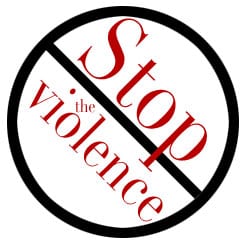They really sugar coat Alcoholics Anonymous in this puff piece about AA and young people. The article offers no possible options to AA other than the 12 step program. No mention of the fact that courts are mandating criminals in droves to these meetings without warning anyone. Typical media bias.
Young people turn to AA to break the grip of alcohol and drugs
BY ERIC ADLER
The Kansas City Star
• 69 percent of college graduates were current drinkers (at least one drink in the past 30 days) in 2010. That compares with 37 percent of adults with less than a high school education.
• Among full-time college students ages 18-22, 63 percent were current drinkers in 2010; 42 percent were binge drinkers; and 16 percent were heavy drinkers. Those numbers are higher than those for other adults ages 18-22 (non-college students and part-time college students): 52 percent were current drinkers, 36 percent were binge drinkers and 12 percent were heavy drinkers.
Names in this story
The Kansas City Star does not publish stories quoting anonymous sources unless there is a compelling reason to do so. Some of the subjects in this story were willing to use their full names, but because the guarantee of anonymity is such a bedrock part of Alcoholics Anonymous’ ethos, The Star agreed to abide by AA’s tradition of identifying individuals only by single, but actual, names.
LAWRENCE — Tall and lithe, 23-year-old Suzanne — once known to her University of Kansas sorority sisters as “Boozin’ Susan” — carries a load of folding chairs into a Sixth Street mini-mall storefront and arranges them in a circle.
Ten young people amble in and, over the next hour, tell why they’re here.
“Hi, I’m Claire, and I’m an alcoholic.” Age 23.
“Hi, I’m Matt, and I’m an alcoholic.” Age 25.
“Hi, I’m Jean, and I’m an alcoholic and an addict.” Age 17. She first got drunk on vodka when she was 8.
There is Stephanie, 20, and two seats away a 19-year-old addict fresh to sobriety. There are Mike and Will, both under 26.
Two sorority girls. A couple of athletes. Gen-Y’ers, children of affluence and of poverty. One young man’s abstemious parents never raised a bottle. Others barely remember mom or dad without a drink or drug in hand.
At a time when binge drinking remains at epidemic levels, and as tens of thousands of high school and college students begin packing for spring break destinations where alcohol flows freely, thousands of other young people nationwide will flow into meetings of Alcoholics Anonymous, having concluded that what they once thought was a rite of youth is an addiction.
Young people in their 20s and even late teens have been part of AA from some of its earliest years, not long after Bill Wilson founded the fellowship in 1935 on a 12-step approach.
At the core of AA is a shared belief that, powerless in the face of their addictions, alcoholics and other addicts work to remain sober one day at a time, lean on others for support and rely on what in AA parlance is one’s “H.P.,” or higher power, or God.
Because of AA’s ways — no dues, no fees, no formal membership rosters and only periodic surveys of attendees — it’s impossible to say exactly how many young people are attending the fellowship’s meetings.
What is clear, researchers say, is that although AA does not work for everyone, for young people who stick to its tenets, it can offer a lifeline in a culture where the pressure to drink is often overwhelming.
“Basically, young people benefit from going,” said Harvard University’s John Kelly, an addiction recovery researcher at the Massachusetts General Hospital who in 2008 published a study that followed 16-year-olds from a San Diego rehab clinic for eight years.
“The strongest predictor of recovery was attendance at AA,” Kelly said. “For every single meeting they attended, they gained an extra two days of abstinence.”
There is testament: Shirley, 58, of Kansas City entered 37 years ago at age 21 and has never relapsed. She knows others, at 40 and 50, who came in at age 18.
“It is absolutely doable,” she said. “The simple point of it is whether you no longer want to live that way. We all have to grow up. That’s part of life. In a way it’s an advantage (entering recovery early). I had to grow up anyway. I had help.”
Come September, the 54th annual International Conference of Young People in Alcoholics Anonymous is to be held in St. Louis. Some 3,000 young people are expected to attend.
http://www.kansascity.com/2012/03/03/3467414/young-people-turn-to-aa-to-break.html


